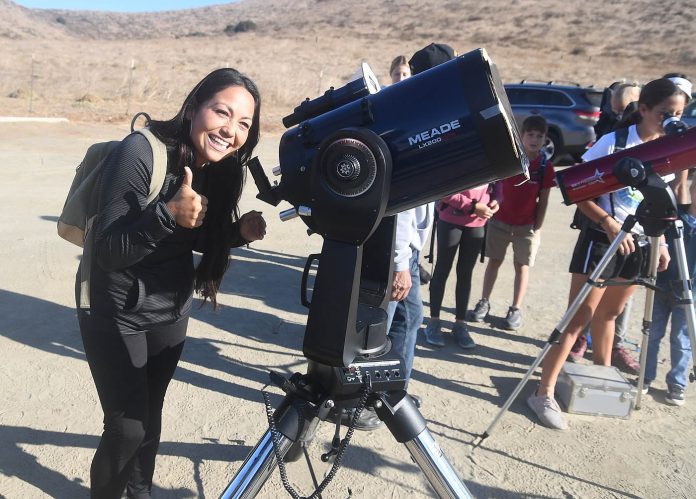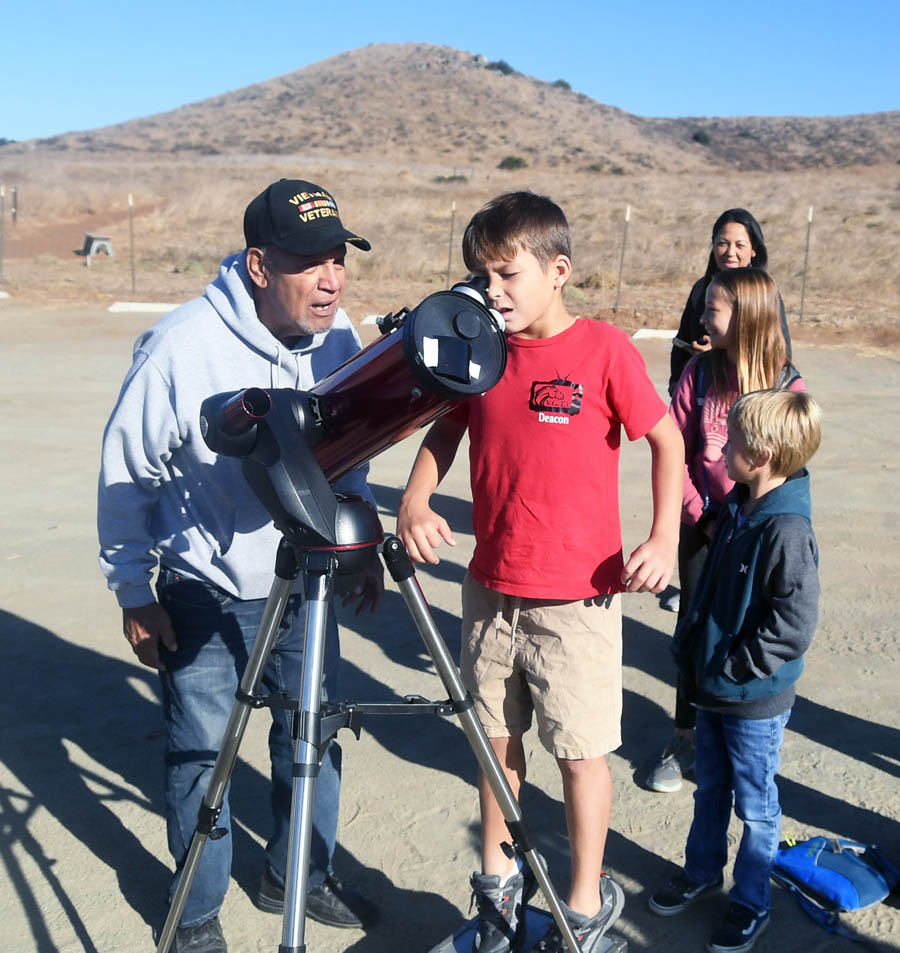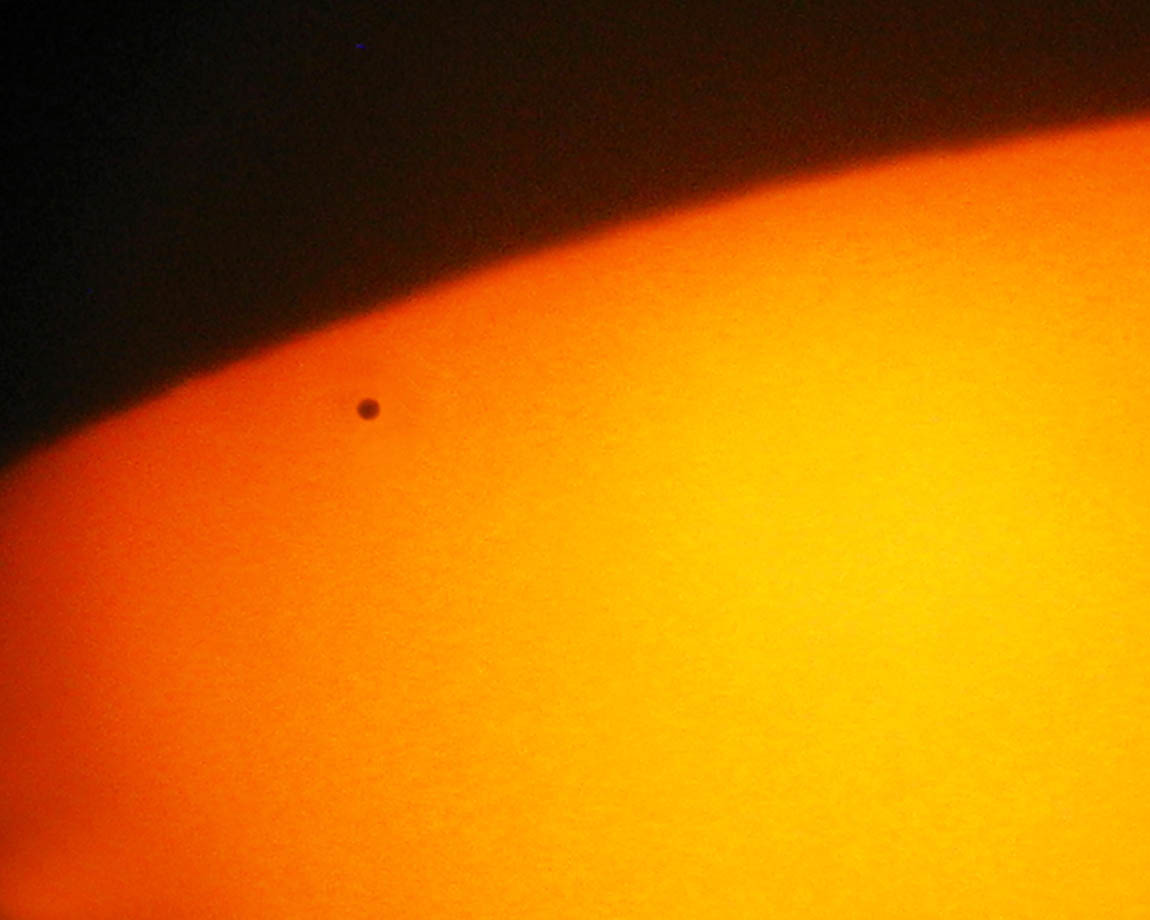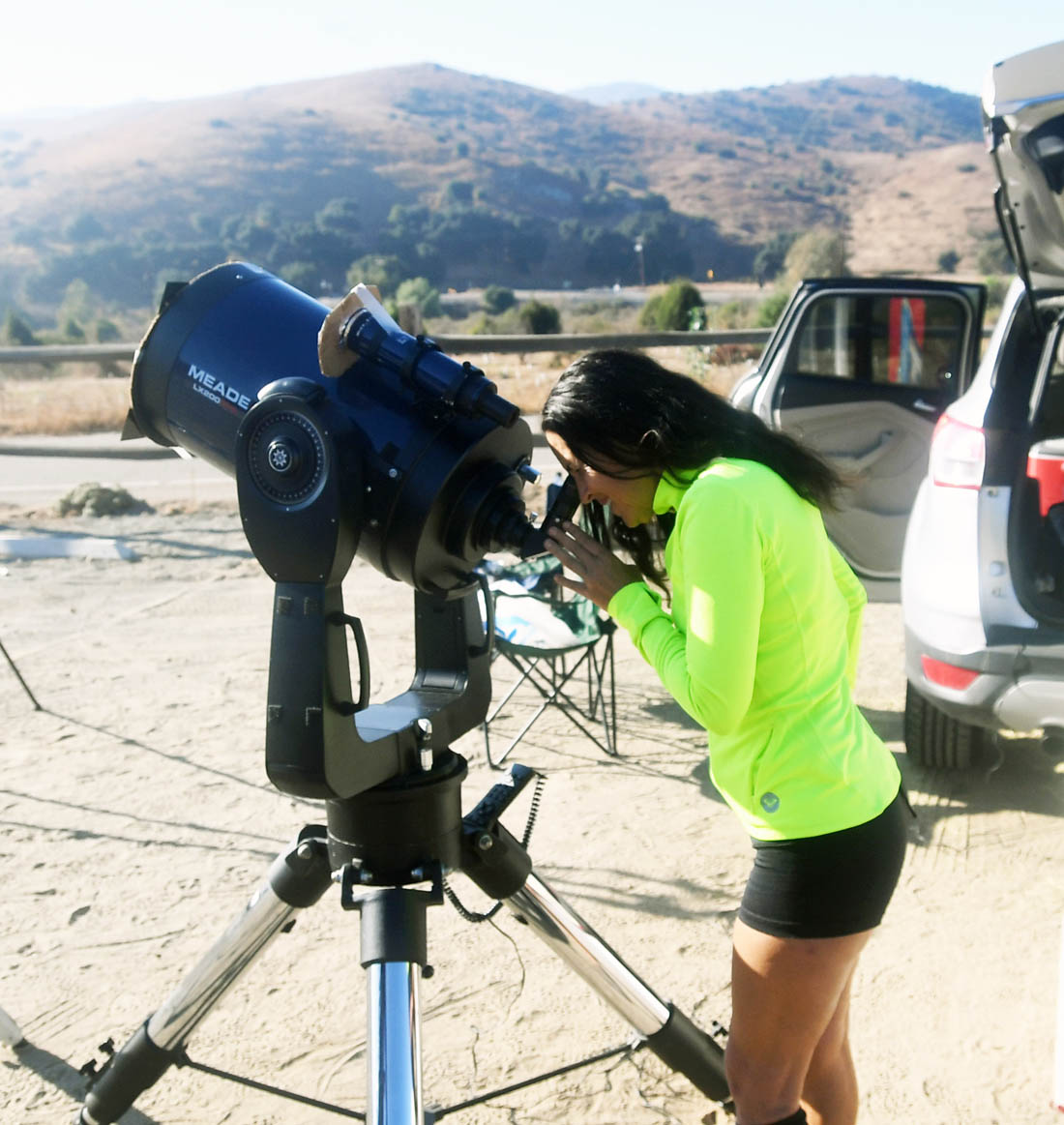
Hikers preparing to hit the trail early Monday morning at Hollenbeck Canyon Wildlife Area in Jamul got a surprise opportunity to witness a relatively rare celestial event: a transit of Mercury across the face of the Sun.
Mercury is the smallest and innermost planet in our solar system and its orbit is inclined so that it periodically passes in directly in front of the sun as viewed from Earth. This results in a transit where the planet creates a silhouette of its image as it crosses the Sun’s disk.
The event occurs approximately 13 times per century. The next transit of Mercury visible from the United States will take place on May 7, 2049.
Locals got a chance to view the event through telescopes set up in the parking lot that were equipped with a special solar filter to safely view the event.
A group from Valhalla High School was among the first to arrive to make use of the hiking trail on the Veterans Day holiday.
The group took turns at the telescope eyepiece as they watched the tiny black dot of Mercury’s image slowly crawl across the Sun’s disk. For children who were unable to reach the eyepiece, freelance photographer Paul Martinez improvised with a metal box for them to stand on to their delight.

“Can you see it?” asked Martinez, from nearby Eastlake, who had two telescopes set up for viewing.
“Yes!” each child excitedly answered.
One mother even held an infant up to the eyepiece for a look at history.
A few curious motorists pulled into the lot to see what was going on at the sight of the telescopes and camera gear pointed skyward.
Monday’s transit lasted five and a half hours, the time it took for Mercury to pass in front of the Sun, though early morning fog and low clouds initially hampered viewing.


Several hikers said they had heard of Monday’s event through news media and were glad they had the opportunity to view it through the telescopes.
Because Mercury and Venus, the second planet outward from the Sun, orbit inside the Earth’s orbit, both planets can transit the Sun.
However, transits of Venus are much more rare than those of Mercury, occurring in a pattern that repeats about 243 years on average with a pair of transits eight years apart separated by gaps of 121.5 and 105.5 years. The last transit of Venus took place in June 2012 while the next one will take place in 2117.
Mercury is much smaller than the Earth, measuring only 3,032 miles in diameter compared to the Earth’s diameter of 7,917.5 miles.
In fact, Mercury’s image is so small when viewed on the face of the Sun that it can be confused with large sunspots if they are present.
The Sun is 864,340 miles diameter, making Mercury appear only about 1/200th its size.
During Monday’s transit Mercury was 29 million miles from the Sun and 63 million miles from Earth.
But the planet’s tiny spherical image was an easy giveaway.
“You can tell it’s round,” noted Ed Winczowski, a science teacher at nearby Eastlake Middle School.

A transit is similar to a solar eclipse except that the images of Mercury and Venus are so much smaller compared to the size of the Moon due to their extreme distances from the Earth that they fail to completely cover up the Sun’s image.
The next celestial event to pique the public interest is the annual Leonid meteor shower the night of Nov. 17-18 when tiny pieces of the comet 55P/Tempel-Tuttle will intersect the Earth’s orbit causing the fluffy grain-sized debris to burn up as it enters our planet’s atmosphere at high velocity.
The shower is expected to produce its best display in the hours before dawn when the point in the constellation Leo from which the meteors appear to radiate is highest in the sky. However, light from a waning gibbous moon may interfere somewhat with viewing this year, though bright fireballs will obviously make their presence known.
The Hollenbeck Canyon Wildlife Area provides a wildlife corridor between the Otay Mountain Wilderness and the Jamul Mountains. Habit includes coastal sage scrub, chaparral, oak woodlands, riparian forests, freshwater marshes and grasslands.
The area is open to the public for activities that include hunting, equestrian use, hiking, mountain biking and dog training.















